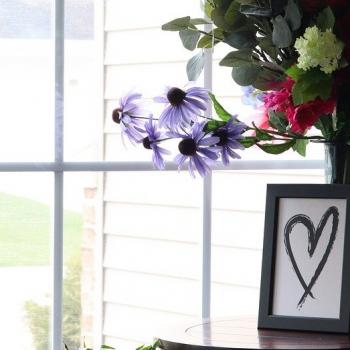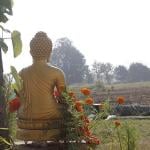 Yellowstone Sandhill Cranes (more pics)
Yellowstone Sandhill Cranes (more pics)This week, 7-1: causes and conditions, understanding the basis for our negative emotions to overcome them, and how our practice will set the foundation for positive feelings.
In Buddhism everything happens for a reason. Or, better stated, everything happens based on causes and conditions.
On one level we can say that the causes are what we bring to a given event or perception in our lives, while the conditions are the outside circumstances. These two come together to bring us our experience.
Here we would say that it is the causes, what we bring to situations, that matter most. With practice, we learn to bring a positive, creative, and dynamic mind to every experience we have. We can think of numerous examples of great people who turned adversity into powerful action: Gandhi, Martin Luther King Jr, and the Dalai Lama to name a few. These people brought causes of justice, fairness, truth, and forgiveness to situations in which most of us would become angry, indignant, paralyzed, or overcome.
Thus, we practice metta bhavana primarily to cultivate the causes of happiness in our lives.
However, with honesty we realize that unlike these great figures, we usually are not able to bring such integrity and positive attitude to difficult situations. We practice with them as our heroes or exemplars, but for now we must do the best we can with who we are, often a very mixed bag of negative, selfish motivations and positive, altruistic drives.
Thus we also take in mind the conditions in our lives necessary to further our spiritual progress: healthy relationships, healthy food and exercise, time in nature, time to ourselves, meditation, and so on. When thinking again of the great figures I mentioned, it should be noted that all of them had exemplary educations, great teachers, time and peace to reflect diligently on the world around them to see what needed to be done in the name of justice, fairness, and so on.
We too can follow that path, making the effort to learn from great teachers, taking the time to reflect on the world, setting the conditions for peace and happiness in our own lives.
For our practice today, meditate on the conditions in your life when you were most at peace. Who were you with? What were you doing? Where were you? Hold a couple moments like this in your mind now and return to this place, return to this emotional and physical sense of well-being during your meditation practice.
I said that this was one level of understanding causes and conditions. The second and more profound level is the realization that all of life is a very dynamic flow, that reality extends beyond the words and concepts we apply to it in our attempts to gain control. At this level we learn to view experiences free of subject and object, free of ‘out there’ and ‘in here’.
Here we are never ‘stuck’ in any moment or experience. If something terrible happens, for instance, we do not analyze over and over again our experience, our actions, the results, etc. We simply bring/maintain awareness of what is happening now – the feelings that can be traced back to the event. These feelings – here, in the now – are the raw material for our spiritual creative work. If we can access the feelings and work with them now (whether that ‘now’ is in meditation, in a calm moment of life, or – more difficult – in the terrible moment itself) then we see that they are based on causes and conditions just like everything else. We can dissect the moment, understand it, not react to it (with grasping or aversion), and awaken to a deeper awareness of reality.
Let us meditate.













